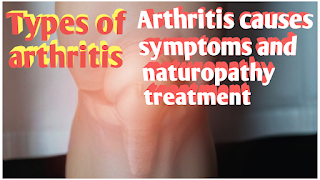Monkey pox disease symptoms
Here are some of the key symptoms of monkeypox----
Fever
Monkeypox often starts with a fever, which can range from mild to more severe.
Headache
Headaches are a common symptom with monkeypox infections.
Muscle aches
Body aches, muscle aches, and back pain are also frequent symptoms.
Fatigue
Feeling very tired or fatigued is common with monkeypox.
Swollen lymph nodes
Swollen lymph nodes, especially in the neck, armpits, or groin, is a distinctive symptom of monkeypox.
Rash
The characteristic rash associated with monkeypox often starts with flat red spots that develop into raised, fluid-filled blisters. The rash can appear on the face, inside the mouth, and on other parts of the body.
Lesions
The rash can develop into fluid-filled lesions that eventually crust over and fall off.
The symptoms typically appear 1-2 weeks after exposure and can last 2-4 weeks. In some cases, the rash may be the first symptom observed. Monkeypox is a viral illness caused by the monkeypox virus, which is related to the smallpox virus. Seeking medical care is recommended if monkeypox is suspected.
Causes of monkey pox
Monkeypox is a viral disease caused by the monkeypox virus, which belongs to the Orthopoxvirus genus. The main causes and modes of transmission of monkeypox include---
1. Animal-to-human transmission
Monkeypox virus is primarily found in certain species of rodents and primates in parts of Africa.
Humans can contract the virus through direct contact with infected animals, their body fluids, or contaminated materials.
2. Human-to-human transmission
Monkeypox can spread from person to person through close physical contact, including--
Direct contact with skin lesions or body fluids of an infected person.
Respiratory droplets during prolonged face-to-face contact with an infected individual.
Contaminated materials, such as clothing or bedding, that have been in contact with an infected person.
3. Sexual transmission
The recent outbreaks have shown that monkeypox can be transmitted through close, intimate contact, including sexual activity.
4. Zoonotic transmission
Monkeypox is a zoonotic disease, meaning it can be transmitted from animals to humans.
Exposure to infected animals, either through hunting, handling, or consumption of infected meat, can lead to monkeypox infection.
It's important to note that monkeypox is not as easily transmitted as some other viruses, such as the SARS-CoV-2 virus that causes COVID-19. Monkeypox typically requires close, prolonged contact for transmission to occur.
Factors that can contribute to the spread of monkeypox include increased human-animal interactions, changes in human behavior, and the decline in immunity to orthopoxviruses due to the discontinuation of smallpox vaccination in many parts of the world.
Naturopathy treatment of monkey pox
Here are some key points about the naturopathic treatment approach for monkeypox---
1. Supportive care
Naturopathic practitioners focus on providing supportive care to help the body naturally fight the infection. This may include ensuring adequate rest, hydration, and a nutritious diet.
2. Herbal remedies
Certain herbs are believed to have antiviral properties that may be helpful, such as astragalus, echinacea, and licorice root. However, their efficacy against monkeypox specifically is not well-established.
3. Homeopathic medicines
Homeopathic practitioners may prescribe individualized homeopathic remedies based on the person's specific symptoms and constitution. However, the evidence for homeopathy treating viral infections is limited.
4. Immune system support
Naturopaths aim to strengthen the immune system through dietary supplements, probiotics, and lifestyle modifications. This is intended to help the body better respond to the monkeypox virus.
5. Topical treatments
Some naturopathic approaches may involve using topical treatments like essential oils or herbal poultices to help manage skin lesions and rashes.
It's important to note that the effectiveness of naturopathic treatments for monkeypox has not been extensively studied. Conventional medical treatments like antivirals and supportive care remain the primary recommended approaches under medical supervision. Anyone with suspected monkeypox should seek care from a licensed healthcare provider.
Precaution in monkey pox
Here are some key precautions to take regarding monkeypox----
1. Avoid close, skin-to-skin contact with people who have monkeypox symptoms. This includes avoiding intimate contact, sharing bedding/clothing, and prolonged face-to-face interaction.
2. Practice good hand hygiene. Wash your hands often with soap and water or use an alcohol-based hand sanitizer.
3. Avoid touching any rashes, sores, or scabs on someone who has monkeypox.
4. If you have been exposed to monkeypox or have symptoms, isolate at home and contact your healthcare provider immediately. Follow their instructions on testing and potential treatment.
5. If you need to be around someone with monkeypox, wear a well-fitted mask and gloves. Avoid touching contaminated materials.
6. Avoid contact with animals that can get monkeypox, such as rodents and primates.
7. Consider getting the monkeypox vaccine if you are at high risk of exposure. This includes people who have been in close contact with someone diagnosed with monkeypox.
8. Stay informed about monkeypox developments and follow guidance from public health authorities. The situation is evolving, so it's important to stay up to date.
Practicing these precautions can help reduce the spread and risk of monkeypox. Seeking medical care promptly if you have symptoms or concerns is also crucial.















